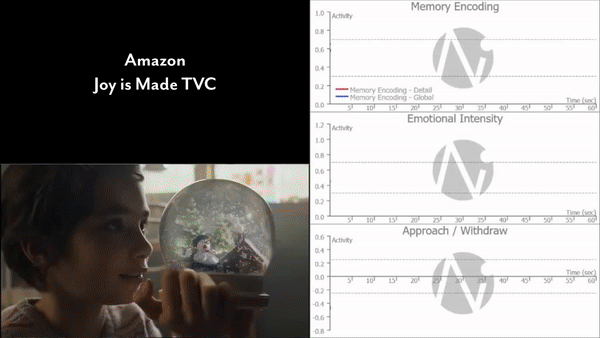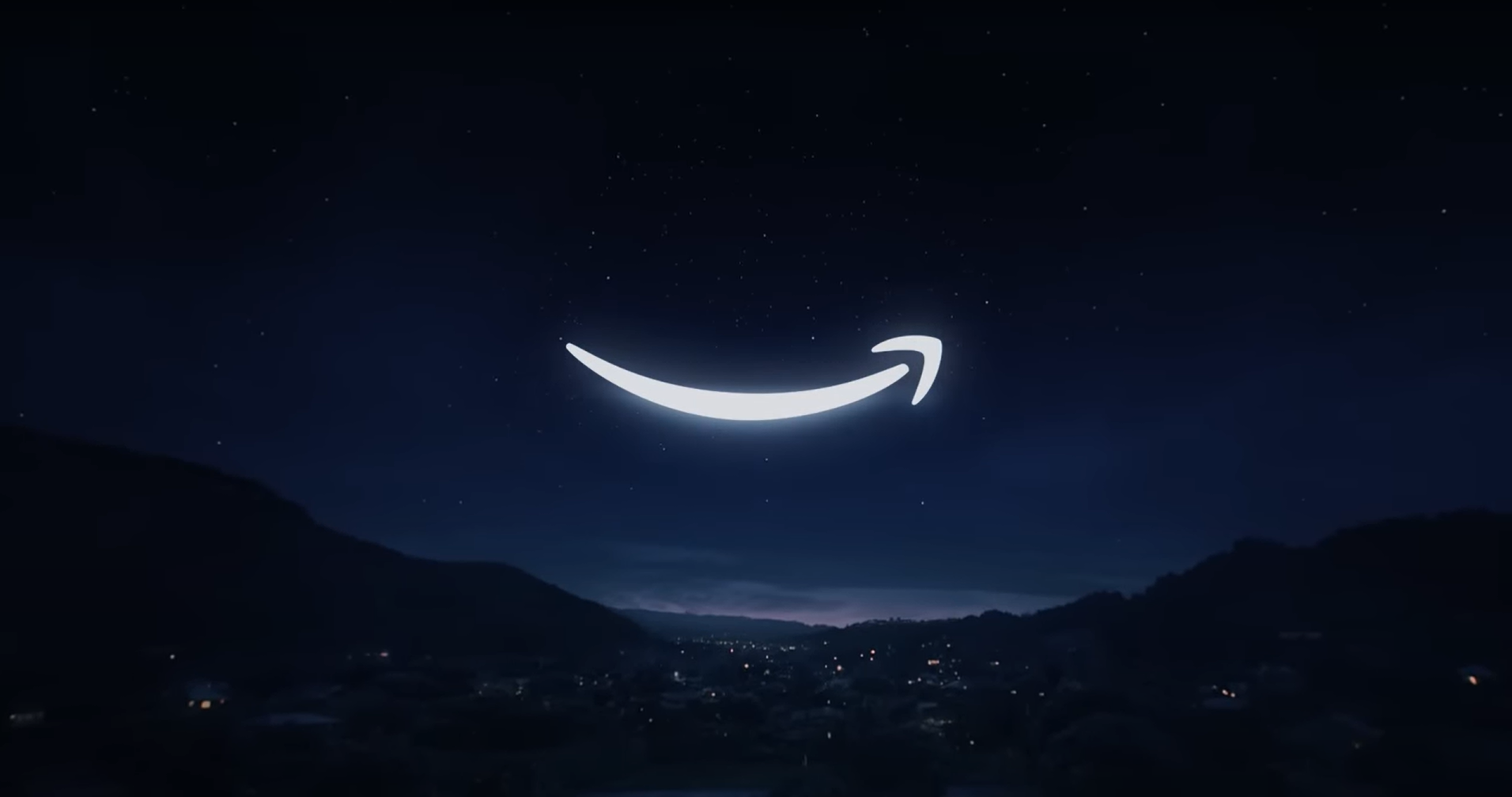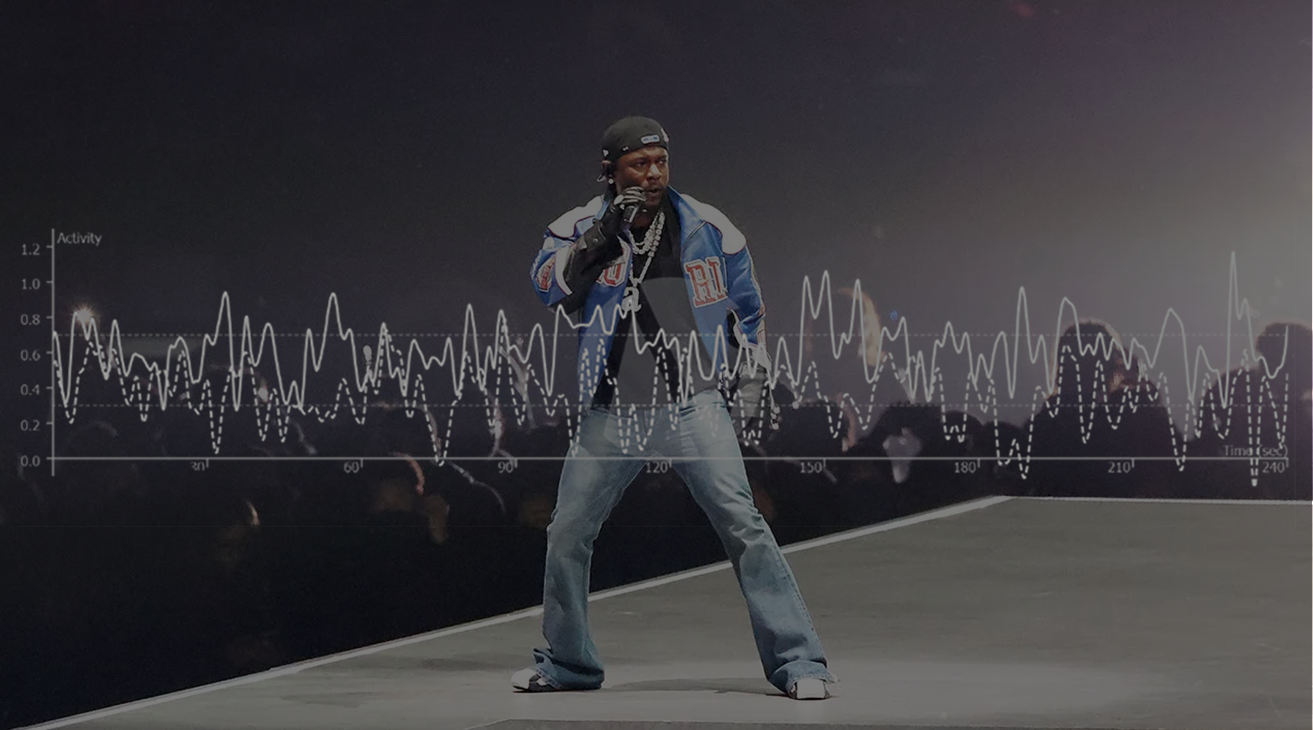
As we head into yet another holiday season, we begin to buy gifts, spend time with loved ones, and prepare for the new year ahead. The days get colder, and people spend more time indoors glued to the television, whether it be for winter sports or a cheesy Hallmark rom-com, we are all guilty of a little extra screentime once the sun starts to set at 4 pm. Brands are very aware of this and therefore spend a pretty penny on making targeted, creative, and unique campaigns to coincide with this season.
Amazon is no stranger to this, as they recently released their highly anticipated annual Christmas ad; depicting a heartwarming story of a loving father and the lengths he will go to bring joy to his child. Although that sounds touching, we decided to dig into how successful it actually was at invoking nostalgia in people through neuroscience data collection.
At Neuro-Insight, we look to the subconscious to see how effectively brands (like Amazon) are able to communicate their message. Our patented technology, Steady State Topography (SST), allows us to measure second-by-second brain responses that breach the conscious and get to the root of human emotion and decision-making.
Our technology allows us to understand exactly what consumers are encoding into long-term memory. Memory matters because what we subconsciously decide to store in memory today becomes the base for our decision-making in the future (it is a predictive measure). As we explore what consumers are encoding into memory, we also look to the brain to tell us why a particular event or message is being stored – for this we leverage key diagnostic metrics including approach / withdrawal, emotional intensity, and engagement.
So what did we learn about Amazon’s Christmas creative? This ad ranked 5th on our holiday list. It demonstrated low-moderate brand impact against our global database of over 25,000 ads. Lets take a closer look at what contributed to this score.
Setting up a full story in 60 seconds or less is a daunting task.
How can brands depict an entire narrative arc in under a minute? It seems impossible, right?
Amazon struggled with that. Throughout the first 30 seconds of the ad, we see viewers fighting to make sense of the story with the drastic ups and downs in approach/withdrawal. Positive valence or approach measures consumer “lean in” in response to ad content while negative valence or withdrawal measures consumer aversion to the ad content. We see spikes in approach followed by major dips into withdrawal which means that they are leaning in, trying to understand, failing, and trying again. Overall, it seems that the overarching story is still a bit lost on the audience.
Be careful not to end a story before branding.
Towards the end of the ad, we see a phenomenon frequently made in advertising — conceptual closure. Conceptual closure is a pattern we see when something ends, and another starts. After a clear ending (here, the reveal of the real-life snow globe) the brain takes a “time out” to process that information, making it unreceptive to any new information that follows. In this case, conceptual closure is detrimental to this ad, as it is the brand logo that immediately follows. The end branding is totally missed.
Subtlety is not your best friend.
When creating a sentimental, narrative-based ad, subtle branding is not the best technique. Not only were viewers struggling to understand what was going on, but they never had a strong moment to tie the creative to Amazon.
Amazon shows its logo on the dad’s phone screen and on some delivery boxes, but neither moment was very explicit. Perhaps, the phone screen should have remained in focus long enough for the eye to travel to the top of the page; Amazon could have even put its name at the top. Since detail memory encoding peaked here, these optimizations would be a simple way to amplify brand breakthrough as viewers actively encode the logo/name into their long-term memory.
Although Amazon is a company that we all know, and probably order from more often than we would like to admit, it seems that they might have missed the mark on this ad. The storyline of the father-and-daughter relationship seemed to invoke an emotional response in people, but unfortunately, the audience was unable to tie it back to Amazon in the end due to conceptual closure occurring and lack of adequate branding.











